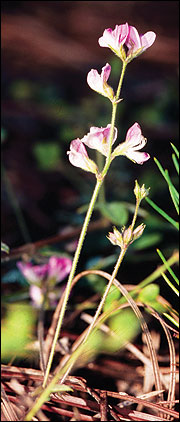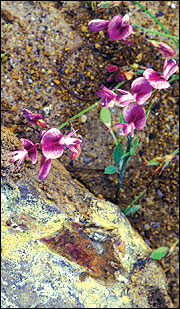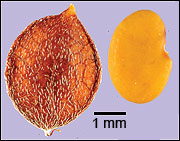Reviewed
Trailing lespedezas
- Lespedeza repens, L. procumbens
- Trailing bush clover
Forb


 Trailing lespedezas are so named for their propensity to trail prostrate along the ground.
Trailing lespedezas are so named for their propensity to trail prostrate along the ground.
©James H. MIller, USDA-NRCS Plants Database
Description
There are only two species of trailing lespedezas in the Midwest and they are found in dry, open woods, savannas and prairies. Trailing lespedezas are small, native lespedezas with trailing stems that can readily form thick mats over bare areas if left undisturbed. The small flowers range from purple to white and can produce a large quantity of seeds.
Bloom period
June to October
Use by bobwhites
Where abundant, trailing lespedezas are an important staple in the fall diet of quail. The small leaves may be eaten by quail in the spring and early summer.


